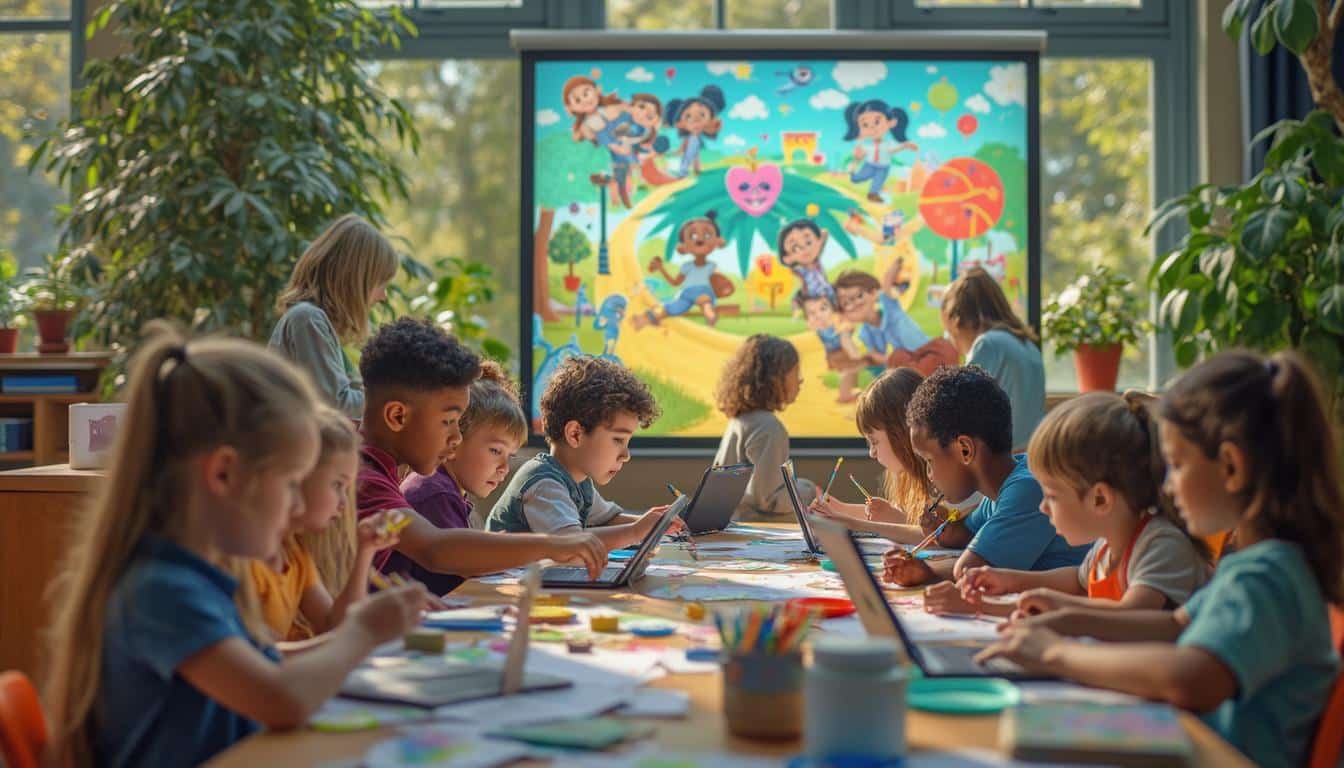Gestalt therapy emerges as a valuable tool to overcome obstacles to creativity, inviting individuals to focus on the present moment and welcome their emotions. By fostering an awareness of sensations and thoughts, this approach helps to lift the mental barriers that hinder creative expression. Through its principles, everyone can learn to reconnect with their creative potential, rediscovering the joy of unhindered creation.
🔥 Nous recommandons Ideamap
Ideamap est l’outil idéal pour un brainstorming ou un projet collaboratif. Grâce son interface facile et à ses fonctions IA, Ideamap booste votre créativité tout en favorisant une meilleure organisation de vos idées pour atteindre vos objectifs.
Gestalt Therapy: An Innovative Approach to Overcome Creative Barriers
Gestalt therapy is a form of psychotherapy that developed in the 1950s, under the influence of Fritz Perls and his wife Laura Perls. This approach focuses on the lived experience of individuals and aims to enhance their psychological well-being by developing a deeper awareness of their emotions, sensations, and thoughts. Ultimately, Gestalt therapy is a process of personal development that allows for the addressing and resolution of internal conflicts, emotional wounds, and creative blockages.
One of the cornerstones of Gestalt therapy is the emphasis on the present moment. For Gestalt therapists, the ability to focus on the “here and now” is essential to liberate the individual from thought patterns that prevent flourishing. This attention to the present helps individuals become aware of their own emotions and express them authentically, thereby fostering a climate conducive to creativity.
Personal responsibility is also a key principle of this approach. Each individual is encouraged to recognize their active role in their life, which includes identifying their needs, emotions, and actions. By becoming aware of their influence on their own existence, individuals become more capable of modifying their behaviors and acting in alignment with their true aspirations. This responsibility can be a powerful catalyst for overcoming creative barriers, as it encourages individuals to assert their ideas and act upon them.
Another fundamental aspect of Gestalt therapy is the practice of mindfulness. Through specific exercises, therapists help patients integrate all elements of their experience, including their bodily sensations, emotions, and thoughts. This holistic approach allows for an in-depth exploration of how different aspects of the individual interact and how this influences their creativity. By developing an expanded awareness, individuals can better manage their emotions and free themselves from creative inhibitions.
The contact cycle is an essential concept in this therapy. This cycle describes how a person comes into contact with their needs and desires and how they can go through different stages, from awareness to action. For example, a person wishing to change careers must first acknowledge their discomfort at work, then identify the need for change, seek information, and ultimately act through applications. Each step of the cycle is crucial for allowing positive transformation and broadening the scope of creative possibilities.
Finally, Gestalt therapy recognizes the importance of integrating polarities. Humans often face apparent contradictions, such as the desire for security and the aspiration for adventure. By accepting and integrating these various facets of oneself, individuals can feel more complete and authentic. This self-acceptance fosters creative freedom, allowing people to express themselves without fear of judgment.
Ultimately, Gestalt therapy offers powerful tools to overcome creative barriers by cultivating self-awareness, personal responsibility, and the acceptance of internal polarities. By promoting a dynamic understanding of oneself, this approach allows individuals to freely explore their creativity, dare to experiment, and realize their ideas. Moreover, by integrating mindfulness practices and attention to the present moment, Gestalt therapy positions itself as a path to personal and creative fulfillment.
FAQ about Gestalt Therapy for Overcoming Creative Barriers
Q: What is Gestalt therapy?
A: Gestalt therapy is a psychotherapeutic approach that focuses on the here and now, allowing individuals to become aware of their emotions, thoughts, and bodily sensations to better understand their reality.
Q: How does Gestalt therapy help boost creativity?
A: By inviting individuals to focus on the present moment and accept their feelings, Gestalt therapy frees the mind from past or future worries, thus fostering the emergence of new ideas and creative solutions.
Q: What are the fundamental principles of Gestalt therapy that can be applied to the creative process?
A: Principles such as the importance of the present moment, personal responsibility, mindfulness, the contact cycle, and the integration of polarities help address creative challenges with a renewed perspective.
Q: How can I apply Gestalt therapy in my daily life to unlock my creativity?
A: You can experiment with breathing exercises, keep a sensations journal, observe your relational interactions, and practice self-kindness to access authentic creativity.
Q: Does Gestalt therapy require a therapist?
A: While working with a therapist can be beneficial for deeply exploring emotions, you can also practice Gestalt therapy concepts independently in your daily life.














